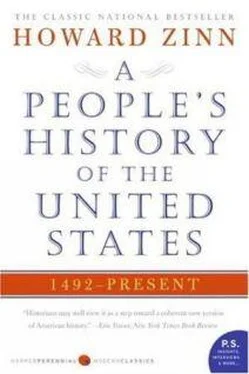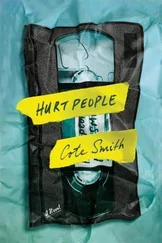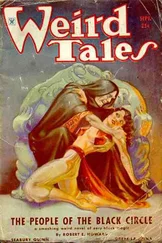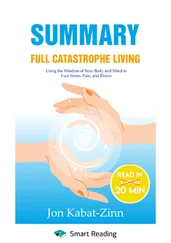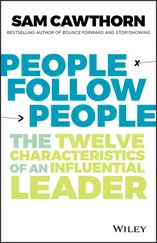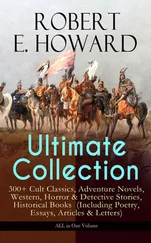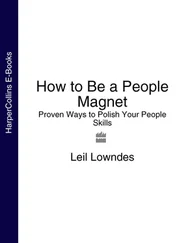Howard Zinn - A People
Здесь есть возможность читать онлайн «Howard Zinn - A People» весь текст электронной книги совершенно бесплатно (целиком полную версию без сокращений). В некоторых случаях можно слушать аудио, скачать через торрент в формате fb2 и присутствует краткое содержание. Издательство: Harper-Collins, Жанр: Фэнтези, на английском языке. Описание произведения, (предисловие) а так же отзывы посетителей доступны на портале библиотеки ЛибКат.
- Название:A People
- Автор:
- Издательство:Harper-Collins
- Жанр:
- Год:неизвестен
- ISBN:нет данных
- Рейтинг книги:4 / 5. Голосов: 1
-
Избранное:Добавить в избранное
- Отзывы:
-
Ваша оценка:
- 80
- 1
- 2
- 3
- 4
- 5
A People: краткое содержание, описание и аннотация
Предлагаем к чтению аннотацию, описание, краткое содержание или предисловие (зависит от того, что написал сам автор книги «A People»). Если вы не нашли необходимую информацию о книге — напишите в комментариях, мы постараемся отыскать её.
A People — читать онлайн бесплатно полную книгу (весь текст) целиком
Ниже представлен текст книги, разбитый по страницам. Система сохранения места последней прочитанной страницы, позволяет с удобством читать онлайн бесплатно книгу «A People», без необходимости каждый раз заново искать на чём Вы остановились. Поставьте закладку, и сможете в любой момент перейти на страницу, на которой закончили чтение.
Интервал:
Закладка:
A black poet in Berkeley, California, June Jordan, had a different view: "I suggest to you it's a hit the same way that crack is, and it doesn't last long."
The Unreported Resistance
In the early 1990s, a writer for the New Republic magazine, reviewing with approval in the New York Times a book about the influence of dangerously unpatriotic elements among American intellectuals, warned his readers of the existence of "a permanent adversarial culture" in the United States.
It was an accurate observation. Despite the political consensus of Democrats and Republicans in Washington which set limits on American reform, making sure that capitalism was in place, that national military strength was maintained, that wealth and power remained in the hands of a few, there were millions of Americans, probably tens of millions, who refused, either actively or silently, to go along. Their activities were largely unreported by the media. They constituted this "permanent adversarial culture."
The Democratic party was more responsive to these Americans, on whose votes it depended. But its responsiveness was limited by its own captivity to corporate interests, and its domestic reforms were severely limited by the system's dependency on militarism and war. Thus, President Lyndon Johnson's War on Poverty in the sixties became a victim of the war in Vietnam, and Jimmy Carter could not go far so long as he insisted on a huge outlay of money for the military, much of this to stockpile more nuclear weapons.
As these limits became clear in the Carter years, a small but determined movement against nuclear arms began to grow. The pioneers were a tiny group of Christian pacifists who had been active against the Vietnam war (among them were a former priest, Philip Berrigan, and his wife, Elizabeth McAlister, a former nun). Again and again, members of do this group would be arrested for engaging in nonviolent acts of dramatic protest against nuclear war at the Pentagon and the White Hous-trespassing on forbidden areas, pouring their own blood on symbols of the war machine.
In 1980, small delegations of peace activists from all over the country maintained a series of demonstrations at the Pentagon, in which over a thousand people were arrested for acts of nonviolent civil disobedience.
In September of that year, Philip Berrigan, his brother Daniel (the Jesuit priest and poet), Molly Rush (a mother of six), Anne Montgomery (a nun and counselor to young runaways and prostitutes in Manhattan), and four of their friends made their way past a guard in the General Electric Plant at King of Prussia, Pennsylvania, where nose cones for nuclear missiles were manufactured. They used sledgehammers to smash two of the nose cones and smeared their own blood over missile parts, blueprints, and furniture. Arrested, sentenced to years in prison, they said they were trying to set an example to do as the Bible suggested, to beat swords into plowshares.
They pointed to the huge allocations of taxpayers' money to corporations producing weaponry: "G.E. drains S3 million a day from the public treasury-an enormous larceny against the poor." Before their trial (they came to be known as the Plowshares Eight), Daniel Berrigan had written in the Catholic Worker .
I know of no sure way of predicting where things will go from there, whether others will hear and respond, or how quickly or slowly. Or whether the act will fail to vitalize others, will come to a grinding halt then and there, its actors stigmatized or dismissed as fools. One swallows dry and takes a chance.
In fact, the movement did not come to a halt. Over the next decade, a national movement against nuclear weapons developed, from a small number of men and women willing to go to jail to make others stop and think to millions of Americans frightened at the thought of nuclear holocaust, indignant at the billions of dollars spent on weaponry while people were in need of life's necessities.
Even the very Middle-American Pennsylvania jurors who convicted the Plowshares Eight showed remarkable sympathy with their actions. One juror, Michael DeRosa, told a reporter, "I didn't think they really went to commit a crime. They went to protest." Another, Mary Ann Ingram, said the jury argued about that: "We… really didn't want to convict them on anything. But we had to because of the way the judge said the thing you can use is what you get under the law." She added: "These people are not criminals. Here are people who are trying to do some good for the country. But the judge said nuclear power wasn't the issue."
Reagan's huge military budget was to provoke a national movement against nuclear weapons. In the election of 1980 that brought him into the Presidency, local referenda in three districts in western Massachusetts permitted voters to say whether they believed in a mutual Soviet-American halt to testing, production, and deployment of all nuclear weapons, and wanted Congress to devote those funds instead to civilian use. Two peace groups had worked for months on the campaign and all three districts approved the resolution (94,000 to 65,000), even those that voted for Reagan as President. Similar referenda received majority votes between 1978 and 1981 in San Francisco, Berkeley, Oakland, Madison, and Detroit.
Women were in the forefront of the new antinuclear movement. Randall Forsberg, a young specialist in nuclear arms, organized the Council for a Nuclear Weapons Freeze, whose simple program-a mutual Soviet-American freeze on the production of new nuclear weapons-began to catch on throughout the country. Shortly after Reagan's election, two thousand women assembled in Washington, marched on the Pentagon, and surrounded it in a great circle, linking arms or stretching to hold the ends of brightly colored scarves. One hundred forty women were arrested for blocking the Pentagon entrance.
A small group of doctors began to organize meetings around the country to teach citizens the medical consequences of nuclear war. They were the core of the Physicians for Social Responsibility, and Dr. Helen Caldicott, the group's president, became one of the most powerful and eloquent national leaders of the movement. At one of their public symposia, Howard Hiatt, dean of the Harvard School of Public Health, gave a graphic description of the results of one twenty-megaton nuclear bomb falling on Boston. Two million people would the. Survivors would be burned, blinded, crippled. In a nuclear war there would be 25 million severe burn cases in the nation, yet all existing facilities could take care of only 200 cases.
At a national meeting of Catholic bishops early in the Reagan administration, the majority opposed any use of nuclear weapons. In November 1981, there were meetings on 151 college campuses around the country on the issue of nuclear war. And at local elections in Boston that month, a resolution calling for increased federal spending on social programs "by reducing the amount of our tax dollars spent on nuclear weapons and programs of foreign intervention" won a majority in every one of Boston 's twenty-two wards, including both white and black working-class districts.
On June 12, 1982, the largest political demonstration in the history of the country took place in Central Park, New York City. Close to a million people gathered to express their determination to bring an end to the arms race.
Scientists who had worked on the atom bomb added their voices to the growing movement. George Kistiakowsky, a Harvard University chemistry professor who had worked on the first atomic bomb, and later was science adviser to President Eisenhower, became a spokesman for the disarmament movement. His last public remarks, before his death from cancer at the age of eighty-two, were in an editorial for the Bulletin of Atomic Scientists in December 1982. "I tell you as my parting words: Forget the channels. There simply is not enough time left before the world explodes. Concentrate instead on organizing, with so many others of like mind, a mass movement for peace such as there has not been before."
Читать дальшеИнтервал:
Закладка:
Похожие книги на «A People»
Представляем Вашему вниманию похожие книги на «A People» списком для выбора. Мы отобрали схожую по названию и смыслу литературу в надежде предоставить читателям больше вариантов отыскать новые, интересные, ещё непрочитанные произведения.
Обсуждение, отзывы о книге «A People» и просто собственные мнения читателей. Оставьте ваши комментарии, напишите, что Вы думаете о произведении, его смысле или главных героях. Укажите что конкретно понравилось, а что нет, и почему Вы так считаете.
